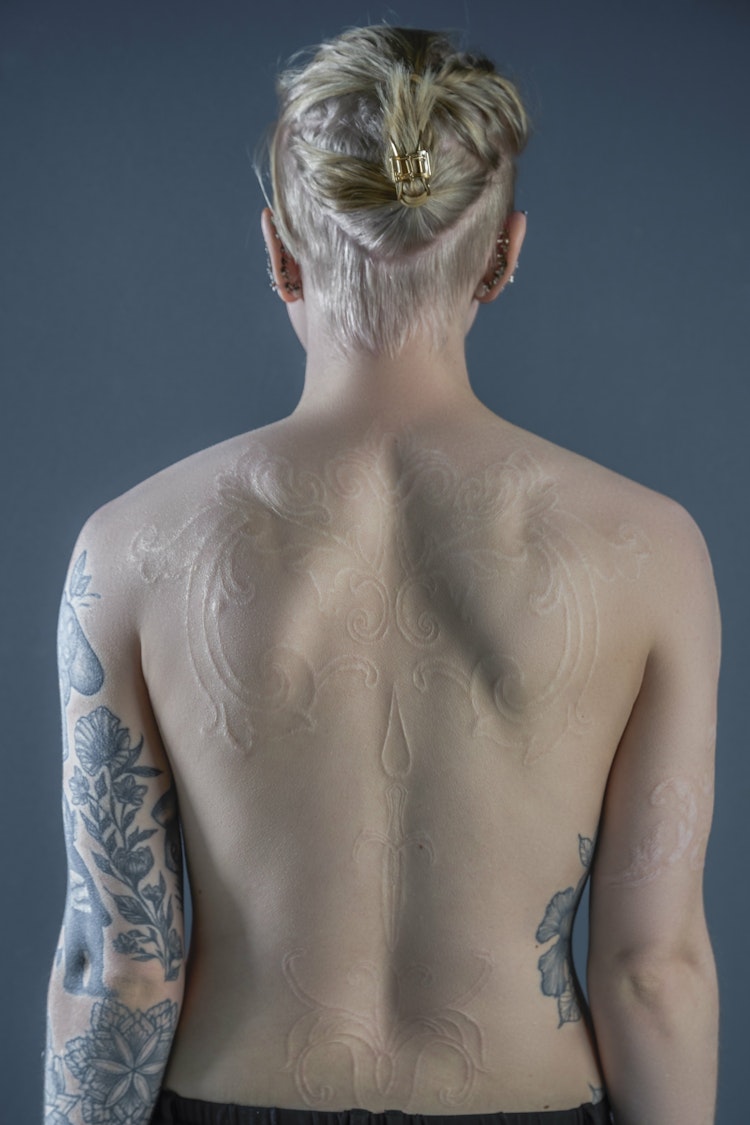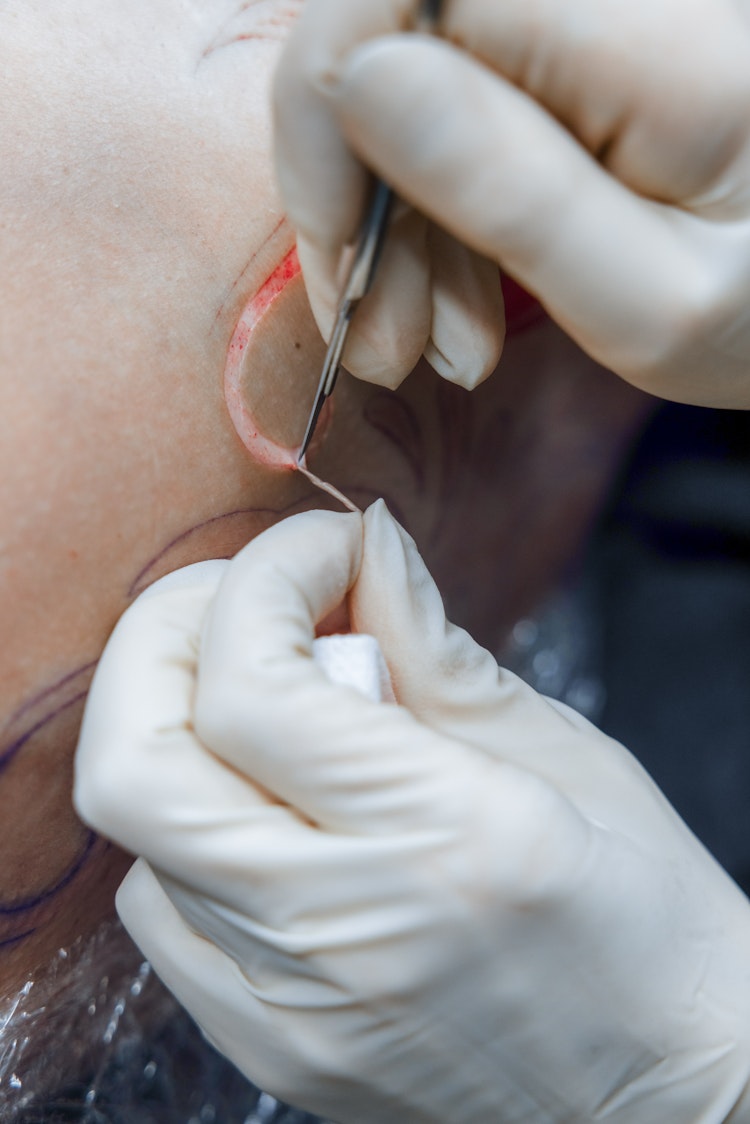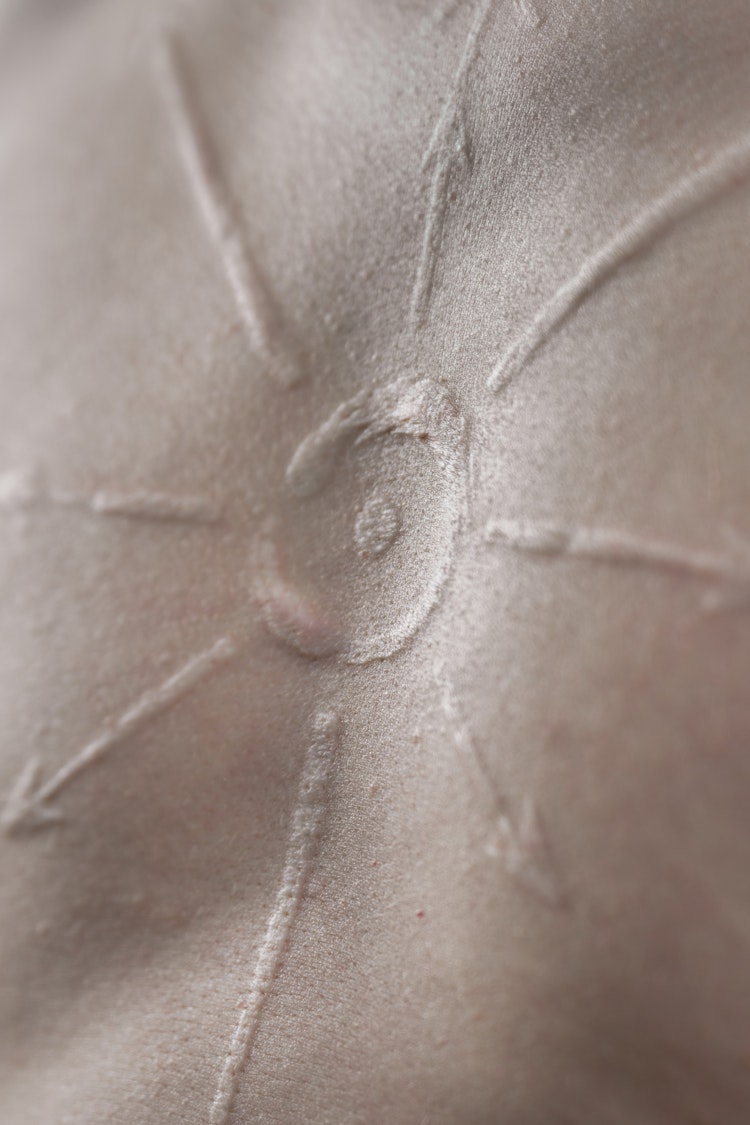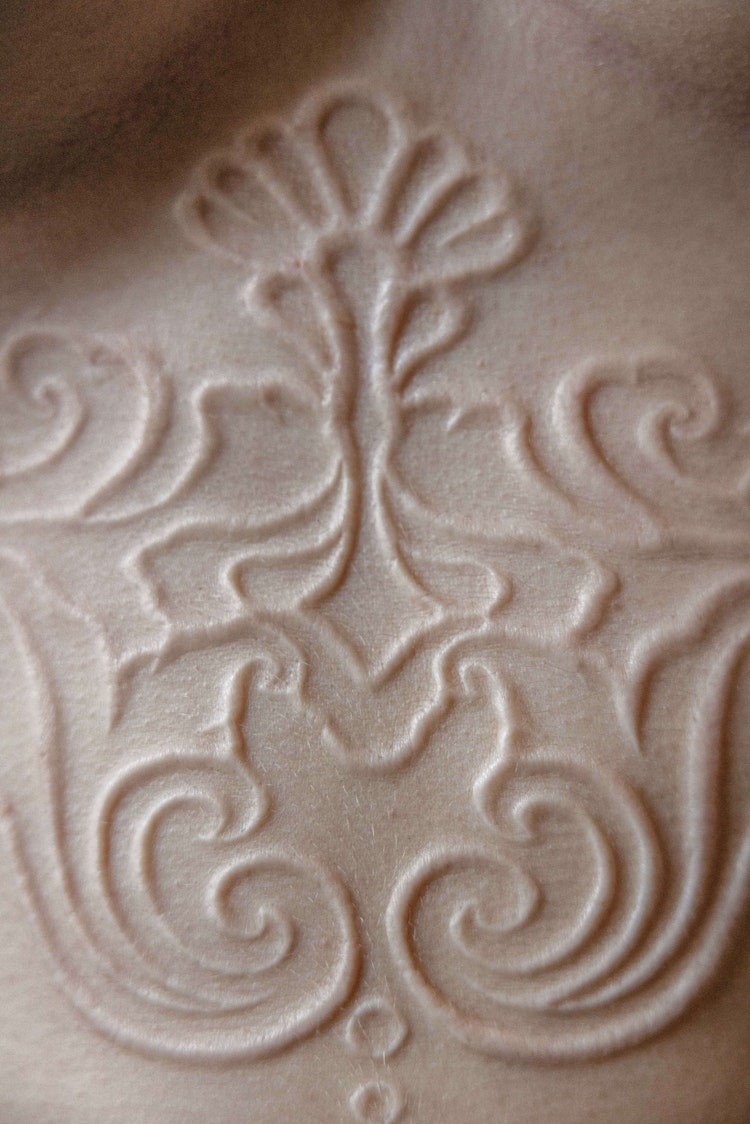

Celine Bergundhaugen, Marita Wikstrøm Svěrák and Helene Fjell.
In this text, Marita Wikstrøm Svěrák introduces us to the field of body piercings, scarification, and body suspension. She explains the craftsmanship behind the different practices, as well as her fascination with scars and the importance of pain. Throughout the text, the artist gives insight into the social and psychological part of her work and explains how it is deeply embedded within her practice.
“When do we usually feel the bravest and most confident?” I believe that going through something painful and mastering this challenge makes a strong case. Especially if you have beautiful scars to remember it by.
Scars have intrigued me since I was a child. I would curiously ask people about their scars and how they got them. Throughout my life, the answers have ranged from exciting and powerful stories about accidents and life-saving surgeries, to the more shameful topic of self-harm. As a person who has a history of self-harm myself, I have a special place in my heart for people who struggle — or who have struggled — with this, and I welcome anyone who wants to take ownership and use the same medium to decorate their bodies. Self-harm, like scarification, is deliberately done, but it is often about a need for control. To courageously choose to give someone else the power to scar you, to create a planned design from a positive space of mind, is a beautiful way to let go of some of that control. I have experienced many situations where scarifications have helped people accept the scars they have gained from negative experiences in the past, and I have heard stories of how scarification and suspension experiences have helped people move away from self-harm. To this day, I love how healed and matured scars show a part of a person’s story, what they have lived through, and what they have overcome to still be here.
Scarification by Marita Wikstrøm Svěrák. Photos by Celine Bergundhaugen.
The three practices
I work as a body piercer, scarification artist, and body suspension practitioner. Body piercing is essentially a long and complicated scar healing process, done in a way so that the specific part of the body will be able to hold a beautiful piece of jewellery. Scarification, on the other hand, is a practice where the focus is on the visual aesthetics of the scars. When creating a scarification, a design is cut into the skin with a scalpel blade; either just single cut lines, or skin peelings where small areas of skin are removed. The wound then heals and matures into a scar that will remain a part of the body. Body suspensions can be understood as a form of piercing experience. Before a suspension, hooks are pierced through the skin, and during the actual suspension the person is lifted into the air by the hooks. Technically one can suspend from any part of the body, but some positions and hook placements are more challenging than others. A common position to start with is called the ‘Suicide suspension’, where there are two horizontal hooks placed in the upper part of the back. The goal with suspension, in contrast to piercing and scarification, is not a lasting visual change to the body, but rather the process and the experience. What’s left after the suspension is just small round scars that remind us of the strength we carry within ourselves, as well as the memory that will be with the person for life.
I have always been a perfectionist, and working as a scarification artist is really the most challenging and rewarding work I can imagine.
The perfect scarification
The first time I saw a picture of a scarification, I was mesmerised. I knew I wanted to work with this medium and explore the art form, but the road was long. The more I learned about the process, the healing, the techniques and the risks, the more respect I gained for the practice, but at the same time, the more intimidated I was to approach it. My interest in the field drew me to seek out all the information I could about the art form, and I worked with suspensions for five years and body piercing for three years before I stepped into the field of scarification. Finally, a brave friend gave me the last push I needed, and insisted that I do my first scarification on her.
Scarification by Marita Wikstrøm Svěrák. Photos by Celine Bergundhaugen.
I have always been a perfectionist, and working as a scarification artist is really the most challenging and rewarding work I can imagine. I love all the work I do, but nothing will ever come close to the satisfaction of doing a perfectly even scarification made up from lines and swirls in the surface layers of skin. I have only one shot at getting it right, there is no chance of working on the piece for multiple sessions like tattoo artists can do with their work, there is no laser or treatment that can remove the design, and if I cut too deep there is no way to reverse it. After I have done the scarification, I also have to trust the client to follow the steps of the aftercare process, and accept that in the end, the body will create the scars in whichever way it wants. Everyone’s genes are different, and depending on the genes, the scars will become either flat or raised and textured. The raised scars are called ‘hypertrophic scarring’, and these add a distinct element to the scarification which cannot be achieved by tattoos. The fully matured scar will usually be settled after one to three years. That is when it has reached its final colour, and has become a fully integrated, unchangeable part of the body. Observing the process at all stages is always exciting and rewarding as everyone is healing differently. Lighter skin tones heal to become more white scars, but some mid-tone to darker skin tones heal darker scars.

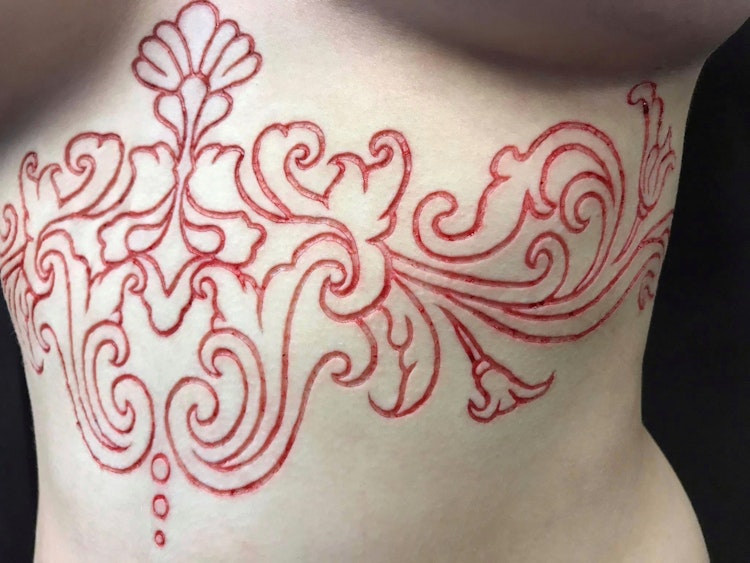
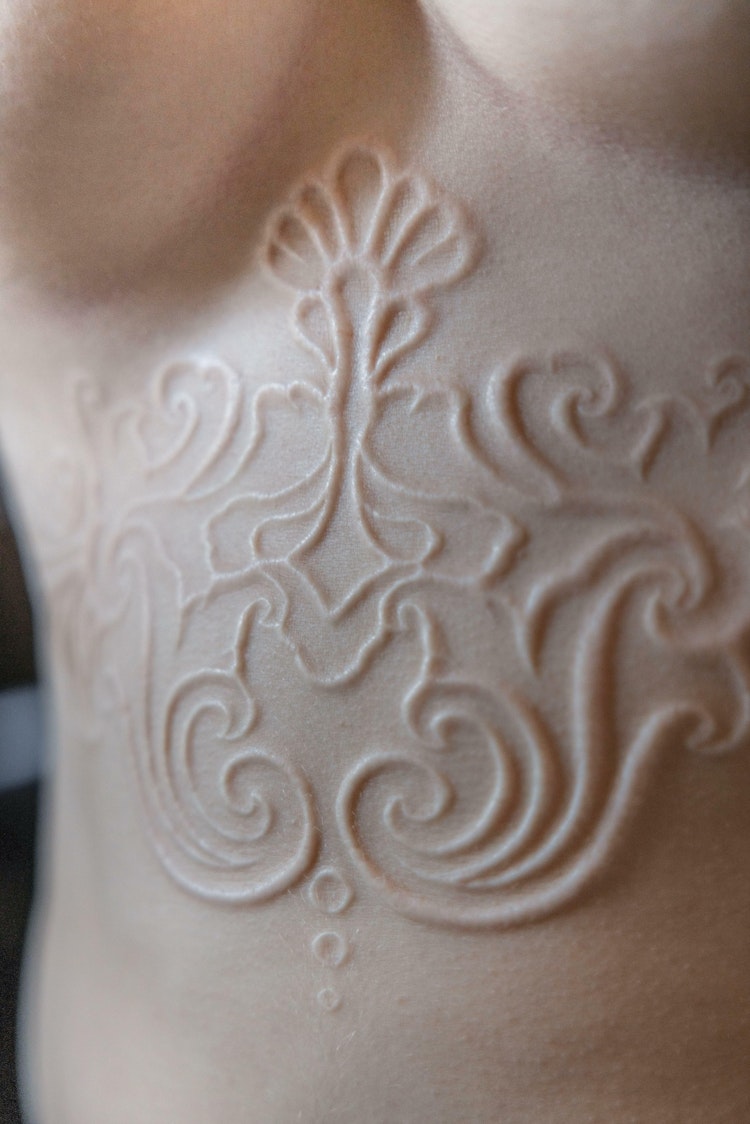
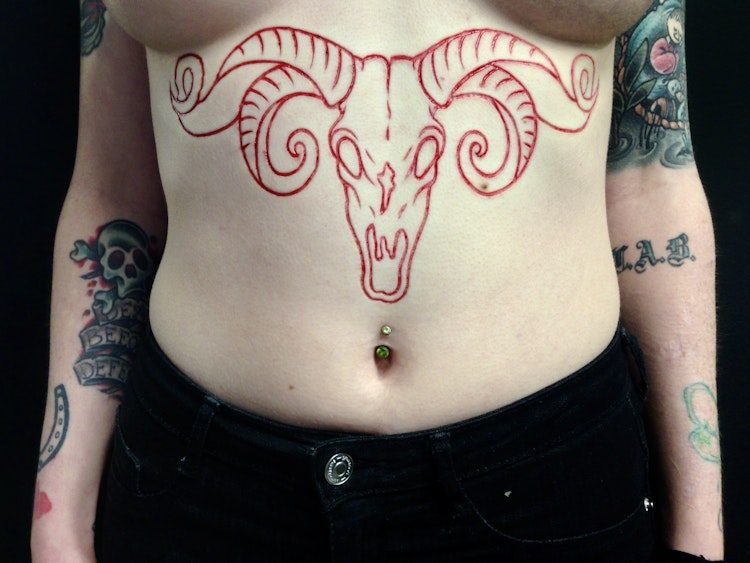
The element of pain
In all the work that I do, there is an inescapable element of pain, and a big part of my job is helping the clients get through that pain. I want to stress that I do not enjoy inflicting pain, and I always try to make the experience as pleasant, calm, and as positive as possible. This said, I love what the client can get in return for the pain they invest. A piercing is a short second of pain, the scarification procedure is - surprisingly to many - less painful than a tattoo, but during the healing period the scar gets sore and itchy. In body suspension, the pain is a very big part of the experience, but this is also what makes it so significant. It is something you need to be willing to accept at the beginning of the process, so that you can come out on the other side in a peaceful and calm state of mind. Surprisingly to many, after a couple of minutes of being suspended in the air, the perception of pain goes away, and the sensation is more of a unique form of pleasure. To stop fearing the pain, to accept it and remain in it, the reward is incredibly empowering. Naturally, the logical part of the brain will make you question whether this is possible to handle, but with a strong mind we can push through much more than we imagine, and this is a good practice for pushing ourselves in other areas of life later. After suspending your body from hooks, the challenges we face during everyday life will seem a lot less overwhelming. After a suspension, it’s normal to feel like you are experiencing a natural high, and for most people there is a very pleasant feeling of calmness that lasts the rest of the day; in many cases it can last for several days. It feels a bit like taking an existential big, fresh breath of air and letting go of all the stress and tension we often live with in today’s world.
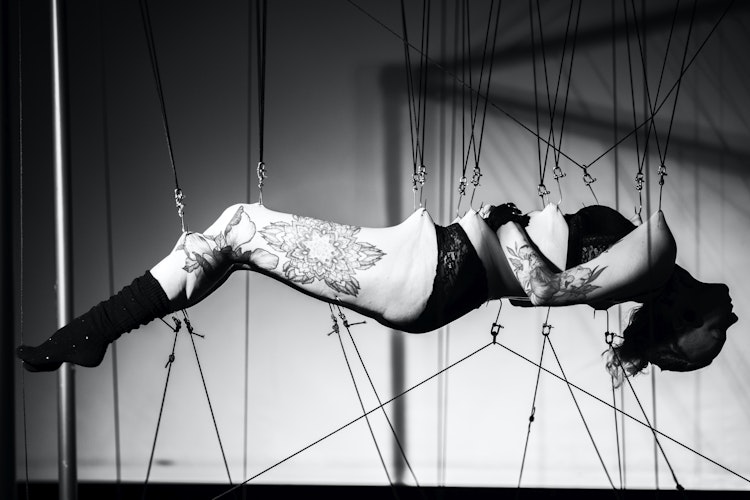
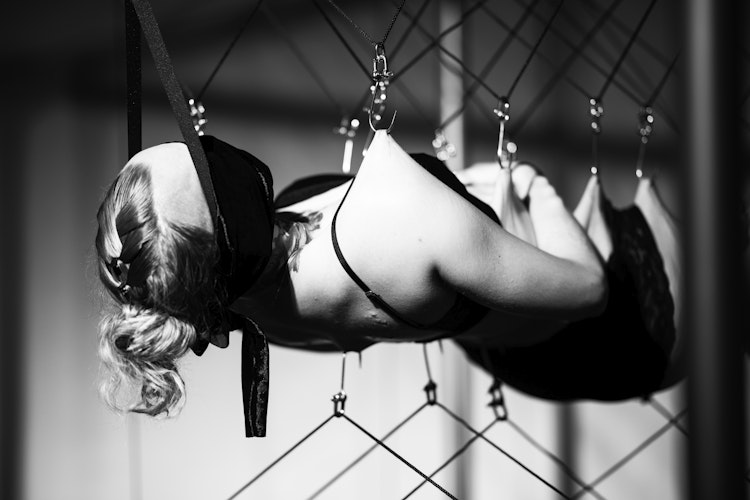
All three practices — piercing, scarification, and suspension — usually start long before the procedures. The client must mentally prepare themselves. Understandably it takes a lot of willpower to lay down, breathe, let go and accept that the fear and pain are just feelings and sensations that are not inherently dangerous. Pain is often something we can handle better than we think. When a person leaves after a piercing, a scarification, or a suspension, they take with them a wound that heals over time. Eventually they get to permanently carry with them a small or big scar that reminds them of how strong they truly are. I believe that these physical changes to our bodies, as well as the memory of the experience, is key to understanding the greater self-esteem we gain from doing these sorts of things. However, even with the more noticeable visual changes, like a piercing and a scarification, the confidence that comes with it does not always directly connect with the visual aspect of it, but through knowing that we made the choice to change something, and to feel more connected to ourselves.
Deciding what we want to do with our bodies and to choose how we decorate them is a beautiful choice that we all have the right to make. To have this choice is fundamental to finding our place in the world, and for how we view ourselves. To experience significant moments of pain in a safe environment, as opposed to the typical encounters we otherwise would have with pain, through accidents and illness, makes us better suited to handle both physical and psychological pain. I believe that this strengthens our core, our self-perception, and what we can manage.
The power of the mind plays a huge role, and if the mind is not with you, your body will not be either.
Rarely ‘just a piercing’
Getting a piercing can be a beautiful decoration for a period, or for the rest of your life. The opportunity to change the jewellery in relation to styles and different periods in life can do so much with our identity and sense of self. Whether it is fashion, a way to focus on something that makes you happier with the reflection in the mirror, or a way to reclaim autonomy of your body after trauma or losing too much control to a person or a social culture. There is often more to the story, and I feel honoured to go through this process with my clients. I often ask my clients when they show up why they decided to get a piercing at this point in time. No two stories are the same, and a piercing is rarely ‘just a piercing’. A piercing is an interesting combination of technical precision and knowledge. It is about working with people, their anatomy and lifestyles, the jewellery, the needles (and often the clients’ fear of them), and the piercing techniques; everything is needed to reach a perfect result.
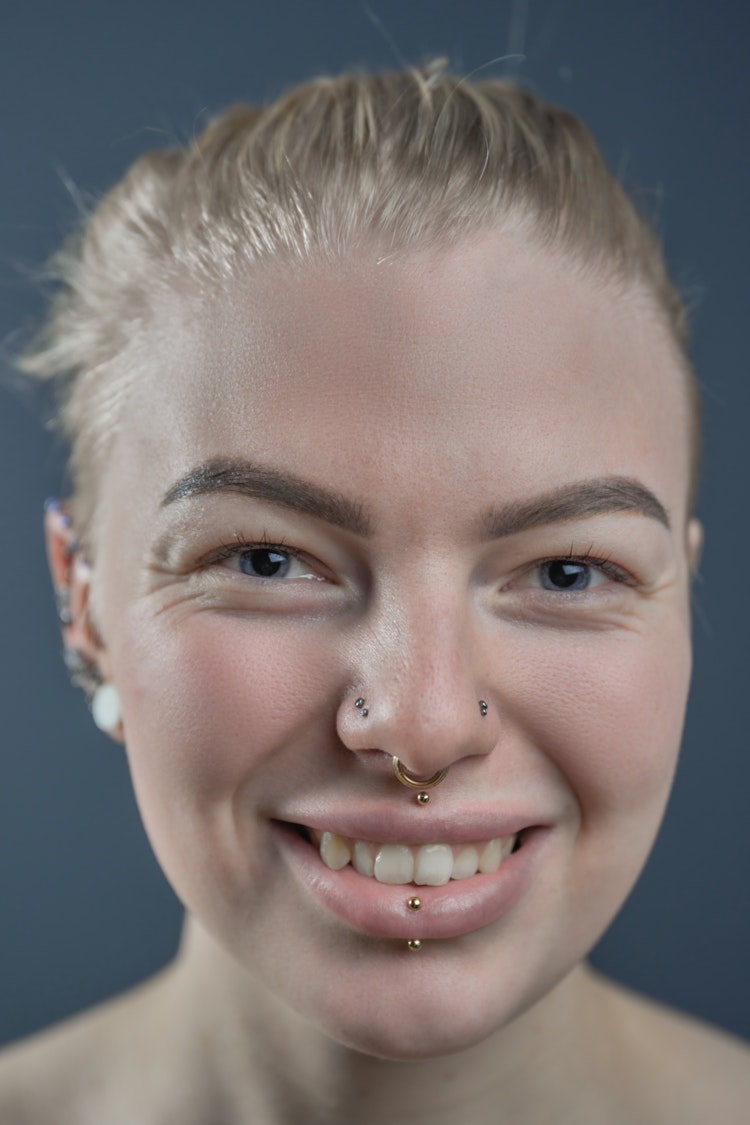
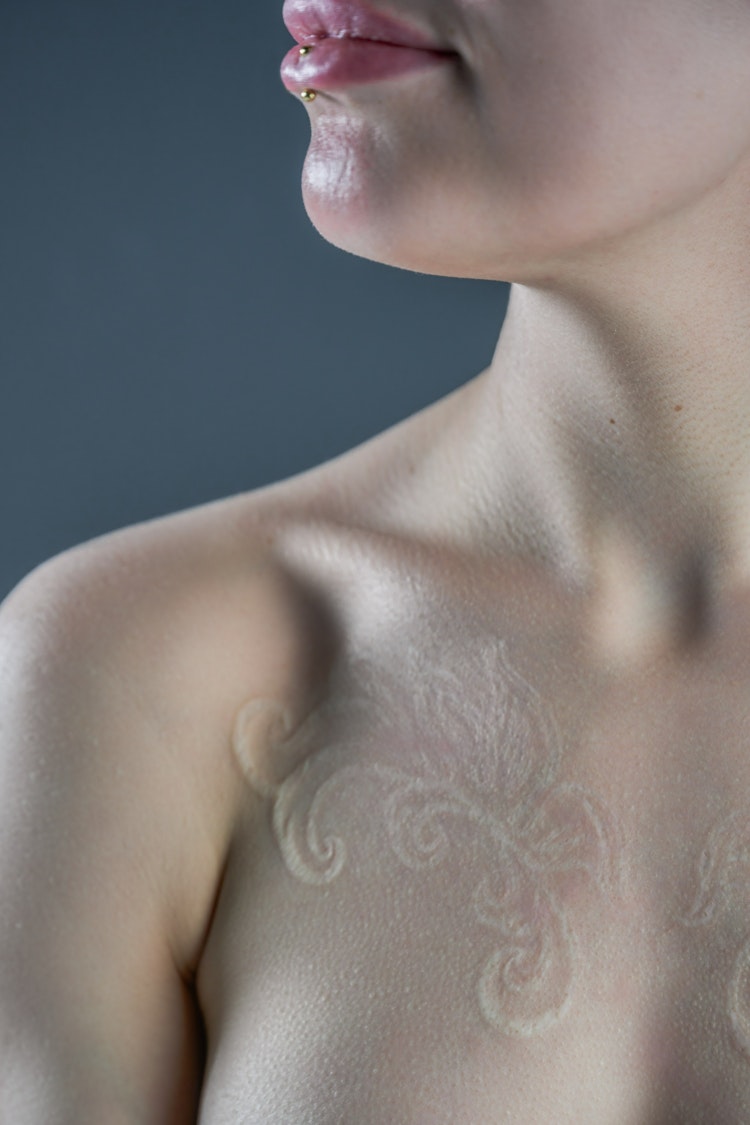
The power of the mind
The process of doing a body suspension is a unique combination of preparing a visual idea of the suspension, moving towards and through the fear, challenging yourself, experiencing pain, and then receiving the reward of a natural high that cannot be compared to anything else. In other words, trying to find a balance between control and letting go. For most people, whether it is their first suspension or their tenth, it is a big moment, and it is an opportunity to connect with oneself and take a break from the world. Usually, the person has an idea in mind of how they want to be positioned when suspended, what they want to wear, and what music to listen to. They prepare to step into their own bubble, accompanied only by their own body and mind. When suspended, there is no room to think about anything else other than the immediate physical experience. It is an essentially unique experience for each person that can be very different from one suspension to the next, depending on the mood, energy level, and potential challenges in the person’s life situation. For many, the feeling after the pain can be described as a meditative state of calm during the suspension, however, sometimes it can also manifest an outburst of energy. Afterwards there are often heartfelt moments, basically allowing the expression of every feeling. Sad or happy tears, as well as laughter and relief.
I often tell people, ‘If you are curious and you want to suspend yourself, you will be able to do it. But if you do it for someone or something else, it will be unnecessarily uncomfortable.’ The power of the mind plays a huge role, and if the mind is not with you, your body will not be either. Piercing the skin with a big needle at the tip of a hook is usually the least painful part of the experience.1 It is a general rule that the more hooks you have, the more comfortable the suspension will be, when the body is lifted from the ground by the skin, the weight of the body is distributed between different points in the body. But this also depends on where the hooks are placed, and each person usually finds their favourite suspension positions when they get to know their body better though a few suspension experiences. No matter the placements and positions, the lifting will always be extremely intense, and the most painful point is the moment when the body fully leaves the ground. But then, if you accept the pain and withstand it for a few minutes, the pain goes away, and it becomes surprisingly relaxing. Your brain flushes your system with chemicals, and in the end, there is more pleasure than pain.
All three branches of my work are both very technical in terms of execution, safety, and hygiene, and require emotional intimacy, empathy, and deep trust. Knowing that I get to work with art that can affect someone so personally and fundamentally is very humbling. Seeing their smiles from accomplishing what they set out to do, and their confidence growing, is incredibly rewarding. I feel very lucky to be part of these moments in my clients’ lives.
